<> Graphium doson (Felder & Felder, 1864) <>
the Common Jay ผีเสื้อหนอนจำปีจุดแยก
Click on any photo to see all photos full size in Lightbox
Additions and corrections to the information provided on this page is always welcome. Please use the Contact form.
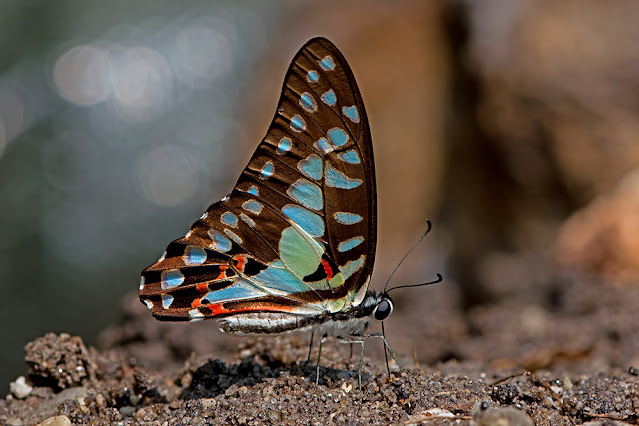
Photo taken at Doi Suthep-Pui National Park, Chiang Mai, Thailand 460m a.s.l.

Graphium doson is common and widespread throughout the whole region. The species is somewhat variable and is often more subject to seasonal and individual variation than to geographic variation. There is no dimorphism and both sexes are visually similar. It has a swift and powerful flight and is active throughout most of the day. They rarely settle down and when feeding on flowers they constantly vibrate their wings.
The adult female lays around 100+ eggs on either side of a leaf on the host plant. The larvae have two colour forms, brown and green, and have an osmeterium for when they feel threatened but it is rarely used. They only eat the young tender leaves of the host. The species is multivoltine and there are several broods per annum.
Synonyms: Papilio doson, Arisbe doson, Papilio axion, Papilio jason, Graphium choui
Taxonomy: Animalia - Arthropoda - Insecta - Lepidoptera - Papilionidae - Papilioninae - Graphium - doson
Regional subspecies: G.doson actor (Myanmar, N.Thailand, Laos, Cambodia, Vietnam, S.China), G.doson axionides (Nepal, N.India, Bangladesh), G.doson evemonides (S.Myanmar, S.Thailand, Malaysia, Singapore, Indonesia), G.doson gyndes (Philippines), G.doson nauta (Philippines), G.doson postianus (Taiwan).
Regional Distribution: India, Nepal, Bhutan, Bangladesh, Myanmar, Thailand, Laos, Cambodia, Vietnam, China, Taiwan, Malaysia, Singapore, Indonesia, Philippines
 |
| Chiang Dao Wildlife Sanctuary, Chiang Mai, Thailand 540m a.s.l. |
Habitat: Graphium doson is found in moist deciduous, semi-evergreen and evergreen forests, grassland, and bamboo forest. Usually seen in the vicinity of streams at low to moderate elevations up to 1400m a.s.l.
Flight time: all year depending on location Wingspan: 50-65mm
Life History: egg 3-4 days instar 1 2-4 days instar 2 2-4 days instar 3 3-4 days instar 4 3-4 days instar 5 4-5 days pupa 9-14 days Total egg to adult 26-39 days
All times are approximate and can vary depending on the season and on the host used.
Larval Hosts: Annona glabra, Annona muricata, Annona squamosa, Artabotrys siamensis, Desmos chinensis, Dasymaschalon dasymaschalum, Desmos cochinchinensis, Miliusa indica, Miliusa tomentosa, Monoon longifolium, Uvaria dulcis, Uvaria grandiflora, Uvaria pierrei, Uvaria macropoda, Uvaria microcarpa (Annonaceae), Mesua ferrea (Calophyllaceae), Magnolia coco, Magnolia compressa, Magnolia figo, Magnolia grandiflora, Magnolia liliifera, Magnolia oblonga (Magnoliaceae), Cinnamomum macrocarpum, Cinnamomum camphora, Litsea salicifolia (Lauraceae), Hunteria zeylanica, Trachelospermum asiaticum (Apocyanaceae).
Actual host plant used depends upon location and availabilty of plant species.
Adult Food Sources: Nectar - Ixora coccinea, Ixora javanica (Rubiaceae), Premna serratifolia, Vitex negundo (Lamiaceae), Ehretia aspera (Boraginaceae), Phanera championii, Peltophorum pterocarpum (Fabaceae), Antigonon leptopus (Polygonaceae), Lantana camara (Verbenaceae), Sida cordifolia (Malvaceae), Anodendron affine (Apocynaceae), Bidens pilosa (Asteraceae), Prunus sp. (Rosaceae). Other - mud puddling (like other Graphium species, doson males adopt a filter-feeding technique, sucking up water through their proboscis, pumping it out through the anus, and then re-imbibing it. This enables them to extract dissolved minerals and prevents them from becoming dehydrated in the tropical heat), animal dung.
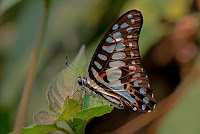 |
| Doi Suthep-Pui National Park, Chiang Mai, Thailand |
%20gallery.jpg) |
| Phou Si Mountain, Luang Prabang, Laos |
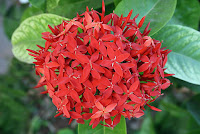 |
| Ixora coccinea, a nectar source |
%20gallery.jpg) |
| Doi Suthep-Pui National Park, Chiang Mai, Thailand |
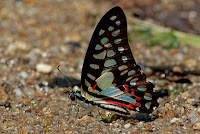 |
| Doi Suthep-Pui National Park, Chiang Mai, Thailand |
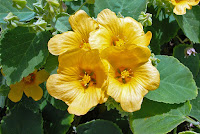 |
| Sida cordifolia, another nectar source |
%20gallery.jpg) |
| Doi Suthep-Pui National Park, Chiang Mai, Thailand |
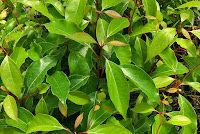 |
| Cinnamomum camphora, a larval host |
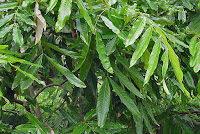 |
| Monoon longifolium, another larval host |
Links to other pages in this series for species in the same subfamily
